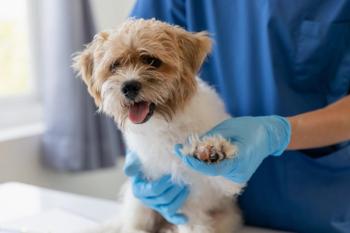
Colorado Springs veterinary clinic deals with Waldo Canyon Fire
Jamie Gaynor, DVM, MS, EMT, treats evacuated animals, hopes clinic will avoid evacuation.
He had little time to be on the phone. At 2 a.m. the morning of Wednesday, June 27,
“This is crazy what’s going on here,” Gaynor told DVM Newsmagazine that day. At the time visibility was less than a quarter-mile, and the fire was moving in three directions. “They’re constantly updating evacuation notices,” Gaynor said.
On that Wednesday Gaynor was caring for evacuated animals and creating the clinic’s evacuation plan. He was cautiously confident the fire wouldn’t reach the clinic, but it was in the danger zone--embers blown by the wind could have ignited new fires at any time. The practice had been inundated with smoke for the past two days. Although most of his clients had canceled their appointments, the clinic was housing eight hospitalized patients and five dogs that had been evacuated in their care. Gaynor continued to update a practice evacuation plan he hoped he wouldn’t have to use.
In the meantime, animals were showing up at area shelters with smoke-related symptoms, which Gaynor was helping to treat. “At least 30,000 people have been evacuated, which means there are a lot of animals involved,” he said.
Gaynor said he saw a lot of coughing, sneezing and respiratory issues in the pets he was treating, including smoke-triggered asthma in cats. “I also looked at a dog with ocular issues,” he said. “(I can) clean him up, flush his eyes and make him more comfortable.”
In addition to physical effects, Gaynor says he saw an emotional impact on the animals as well. “What’s interesting between my own patients and the evacuees is a certain level of anxiety,” he said. “They can smell the smoke and their natural reaction is to exit that smoke.”
His team was experiencing a certain level of anxiety, too. Some had already been evacuated from their homes. And everyone was bracing for possible evacuation of the clinic--either voluntary if conditions worsened or mandatory if the fire continued to blaze east. “We can be out of this facility with patients in 30 minutes or less,” Gaynor said.
Although he felt the practice was not in imminent danger, Gaynor said the fire seemed to change moment to moment. But an evacuation plan gave everyone peace of mind. “We have a plan; we know what to do if something happens,” he said. “Even if we have to evacuate we know where we’ll set up our ICU. The south office is six miles from here--really in no danger zone.”
Gaynor wasn’t as confident about the risk to his family’s home, however. He suspected his neighborhood would be evacuated within the week. “My house is getting closer and closer to the evacuation area,” he said. “My dogs and family are out of town, so at least I don’t have to worry about them.”
Gaynor said he was carrying around five boxes of important papers and belongings from his house in his car. “I don’t have to go back to the house to evacuate it,” he said. “While I would hate to lose my house, bottom line is, it’s stuff. As long as family and pets are OK, that’s the bottom line.”
As of Friday, June 29, Gaynor, his staff and clinic were safe; firefighters were making progress on perimeter containment. However, staff members who had been evacuated from their homes had not been able to return. “We are feeling better about the possibility that our hospital will not have to evacuate,” Gaynor said in an e-mail on Monday, July 2, “but it is a wildfire and we learned (last Tuesday) that it can be very unpredictable.”
The Humane Society of the Pikes Peak Region has set up sites for evacuated animals at 610 Abbott Lane and 3650 N. Nevada Ave. They are currently in need of dog and cat crates of all sizes, as well as blankets and towels.
Additional information
For more information about the Waldo Canyon Fire, go to the Incident Information System website at
Newsletter
From exam room tips to practice management insights, get trusted veterinary news delivered straight to your inbox—subscribe to dvm360.




